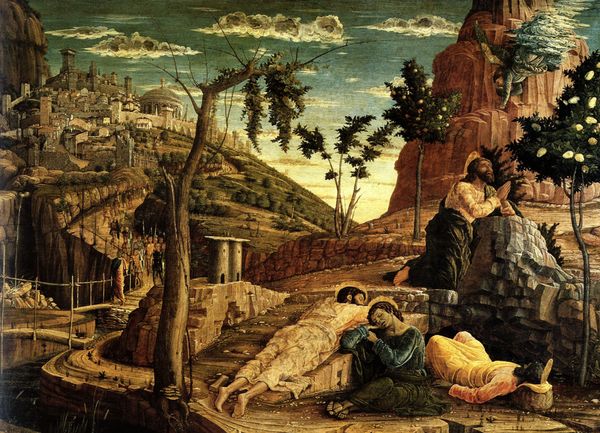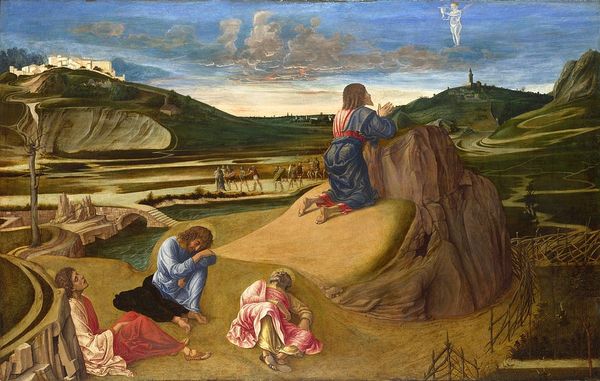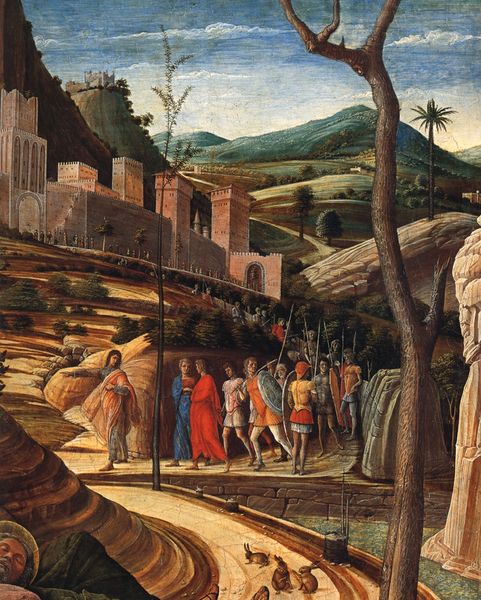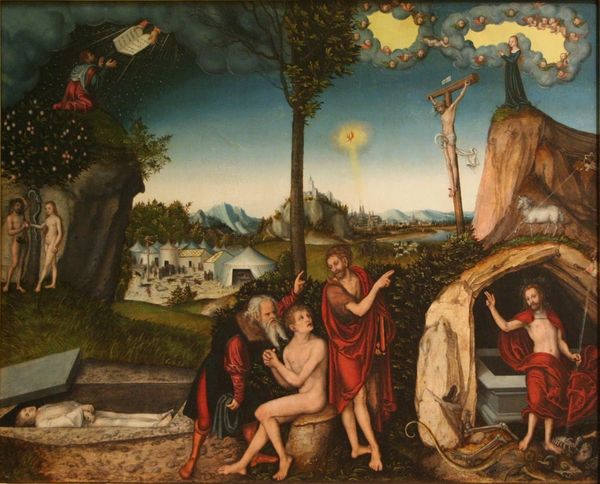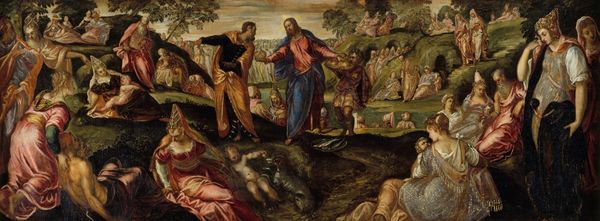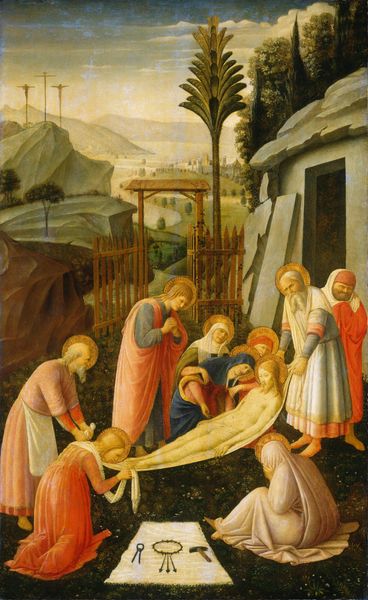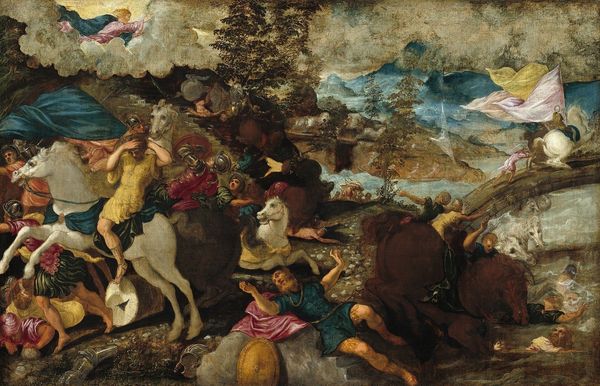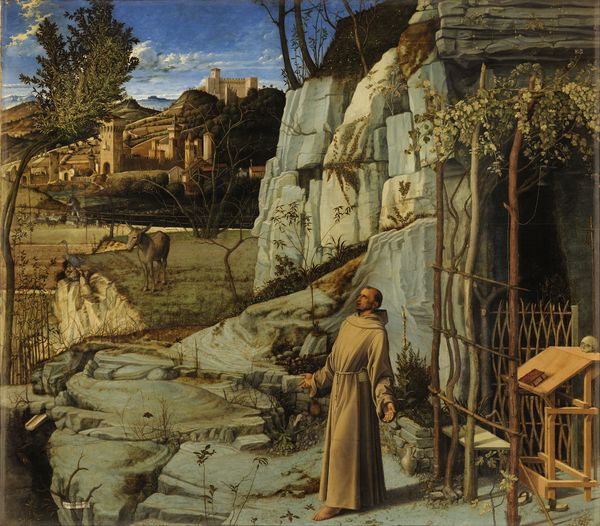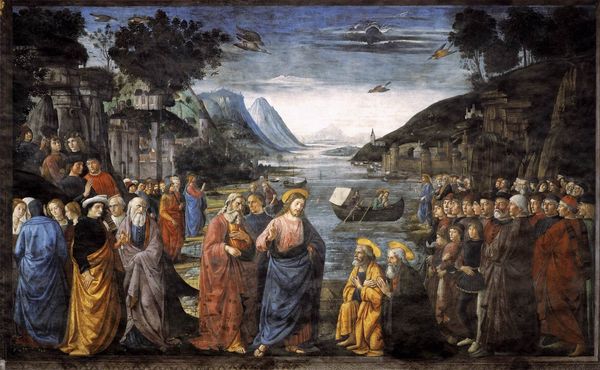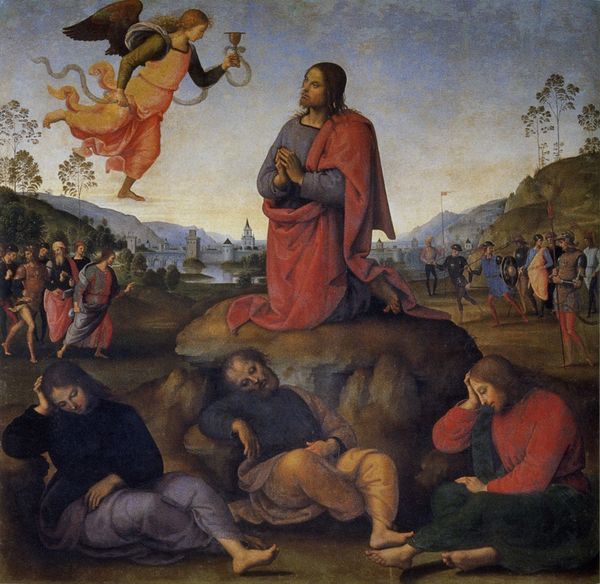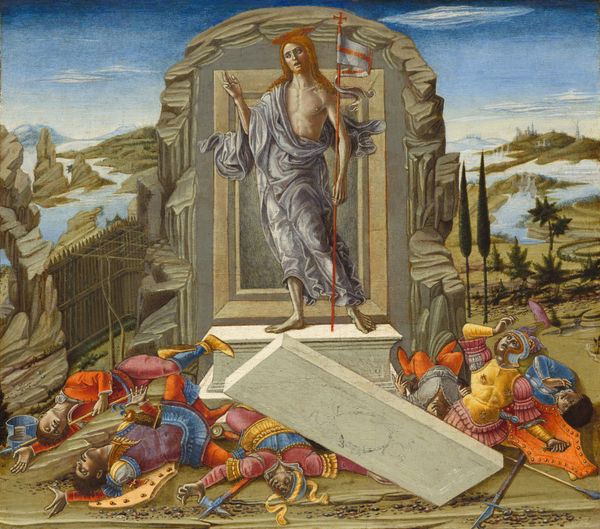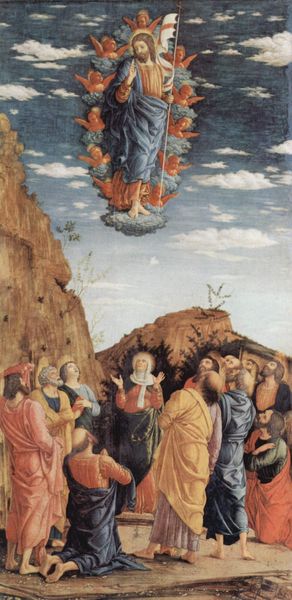
painting, oil-paint
#
painting
#
oil-paint
#
landscape
#
figuration
#
oil painting
#
jesus-christ
#
christianity
#
painting painterly
#
history-painting
#
italian-renaissance
#
early-renaissance
#
christ
Dimensions: 63 x 80 cm
Copyright: Public domain
Editor: This is Andrea Mantegna’s "The Agony in the Garden" from around 1460, painted in oil. It's quite striking – Christ's isolation feels so pronounced against this strange, almost lunar landscape. What aspects of this work stand out to you? Curator: What immediately grabs me is how Mantegna uses the religious narrative to reflect broader social anxieties of the time. Think about the context: The Italian Renaissance, but also a period rife with political instability and the ever-present threat of the plague. Editor: I see what you mean. The landscape almost seems to mirror that anxiety with its barrenness and sharp, jagged rocks. Curator: Exactly. The figures are not just biblical characters; they are stand-ins for a population grappling with uncertainty. Even the angels carrying the cross above seem less like divine messengers and more like symbols of an inevitable fate, right? And who is this ominous bird watching over? Is that a symbol of prophecy, doom, or a reflection on class and marginalization, a witness to Christ's, and by extension, the common person's suffering? Editor: That makes me rethink the figures sleeping in the foreground too. Curator: Consider their vulnerability. Mantegna is highlighting not just Christ’s personal agony, but also the communal sense of helplessness and perhaps a commentary on structures that led to that very suffering. He makes us consider who benefits from our ignorance, apathy and slumber. What does it mean for us to awaken from our privileged sleep and recognize how religious structures oppress in equal measure that they free? Editor: I hadn't considered those connections before. Seeing the painting as a reflection of societal anxieties really deepens its impact. Curator: Art gives us space to confront painful historical moments. It makes us more empathetic and aware. It shows us who we can become, for better or for worse. Editor: Absolutely. It gives a totally different understanding of Mantegna’s intentions. Curator: That is how we unearth what's always been there.
Comments
No comments
Be the first to comment and join the conversation on the ultimate creative platform.
